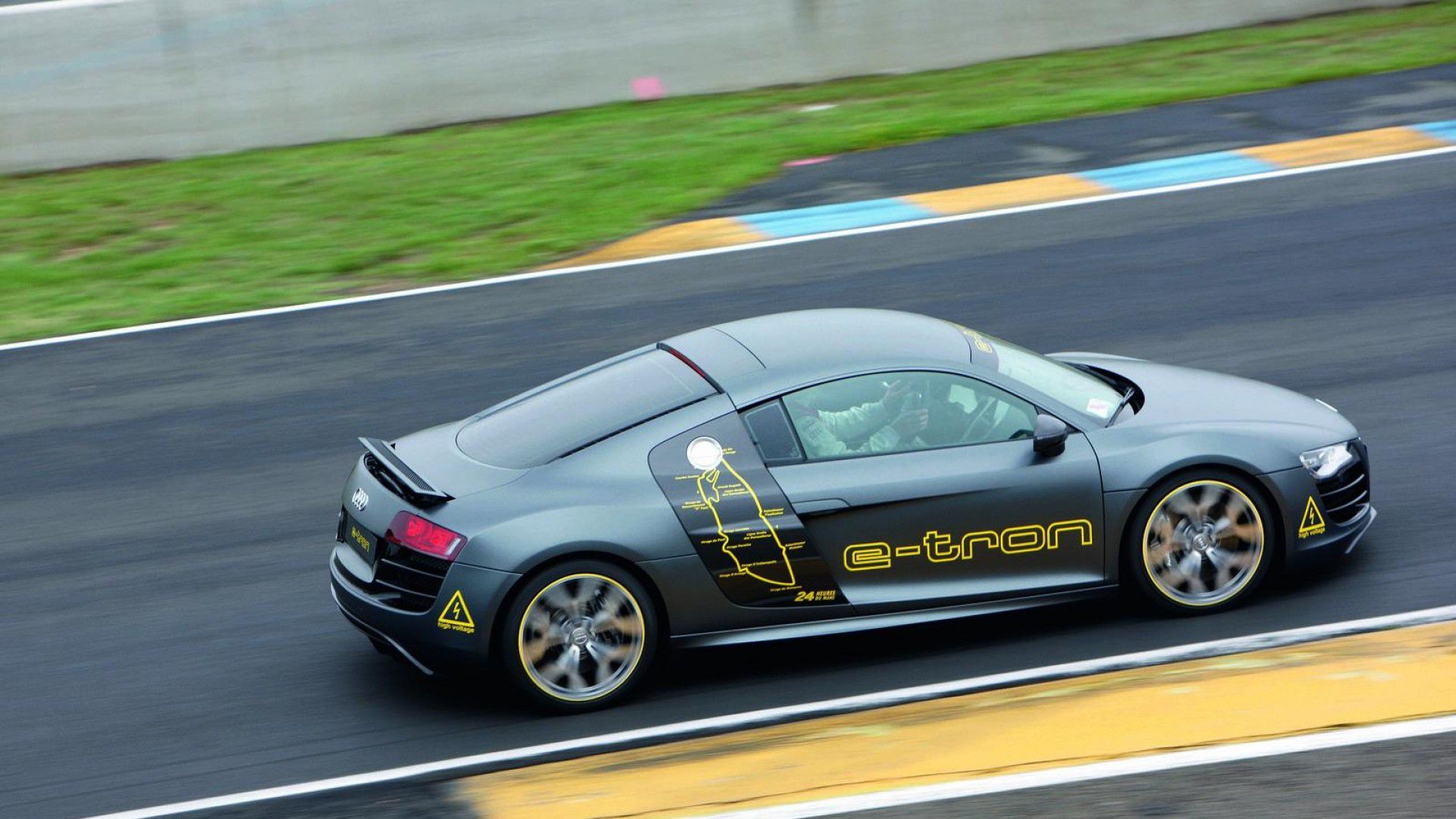Audi R8R (Le Mans Prototype)
The design of the Audi R8R began in 1997, when Audi began investigating the possibility of entering the 24 Hours of Le Mans. The first prototype was made in 1998, showing an open cockpit car, having a typical Audi style, but still missing many features of a prototype. The car, designed by Tony Southgate and built by Dallara, had an Audi engine 3.6 liters twin-turbo V8 engine. In the vehicle, was included a large number of aerodynamic vents in the nose as well as high sidepods that characterized the NACA ducts on their hunts to feed the turbochargers.
In the 12 Hours of Sebring, the aerodynamics was importantly involved. A long tail was highlighted, with the subtly curved arches of the wheels on the shell side. The front was also less, and featured a more aerodynamic styling on the original prototype stylized.
However, after testing of Sebring, further adjustments were made in the Audi R8R to improve his overall speed in preparation for Le Mans. The bodywork of the front was more evolved, with a wider and curved to be used sidepod. The NACA ducts were also replaced by an input vertical air coming out of the side fender. The tail was also shortened, and aerodynamic elements were added to the style of sidepods.
Only five R8Rs total.O vehicles would be built, # 204 and # 205, Sebring would run only in 1999, while # 307 and # 308 would go to Le Mans.O vehicle # 306 was added in 2000 to compete in the American Le Mans Series. Lessons learned from the R8R would later be evolved for the Audi R8.
After months of testing, the R8R made its debut at the 12 Hours of Sebring in 1999. Breaking team Joest Racing in Germany, the R8Rs showed some initial difficulties in qualifying, managing to set only the 11th and 12th places faster times. However, during the race, the cars proved their durability to be able to last longer than most competitors who had initially exceeded them. Even the also new and victorious future BMW V12 LMR suffered some problems, one of his entries was far superior in terms of rhythm and confidence. Following twelve o’clock, however, R8Rs succeeded in taking the podium with a 3rd place finish, while the other team car finished 5th.
Following Sebring, the R8Rs returned for testing, reaching now the brand new Audi R8C. In tests at Le Mans in May, the R8Rs were able to go against most of the major manufacturers for the first time. Audi presented its pace, taking time 8th and 11th fastest times throughout the test, beating competitors like Mercedes-Benz and Nissan.
For the race itself, the R8Rs once again show its durability. Although they managed to qualify 9th and 11, managed to survive most of its competitors from Mercedes-Benz, Toyota, Panoz, BMW and Nissan. In the end, R8Rs managed to return home in a respectable 3rd and 4th places, again scoring a podium, having only lost to BMW V12 LMR sturdy and very rapid Toyota GT-One
Following the 24 Hours of Le Mans, Audi had to decide which of the two prototypes they would continue to work in 2000. Audi R8C, who failed to finish the 24 hours of Le Mans and showed lack of pace compared to the R8R was disassembled. The R8R would be evolved to a new prototype known simply as the Audi R8, sharing only the mechanics, not the style.
However, although the R8 made its debut at the 12 Hours of Sebring in 2000, the car was returned to Europe, Audi, to conduct more tests for the year Le Mans. This left the older R8R to return to the American Le Mans Series to compete in the next two rounds of the season at Charlotte Motor Speedway and Silverstone Circuit. In Charlotte, R8R got the 6th place behind the double BMW and Panoz, although one of R8R has had mechanical problems. For Silverstone, both R8Rs have a better performance, once again taking a podium place. Beaten again by BMW and Panoz, the R8Rs lead the 3rd and 4th places. Following Silverstone, the R8Rs were permanently removed as the new Audi R8 for the rest of the season of the American Le Mans Series.
The R8R possessed about 600 HP (450 kW) with a V8 engine, which allowed it to reach 335km/h (208mph) in the 24 hours of Le Mans.
208
